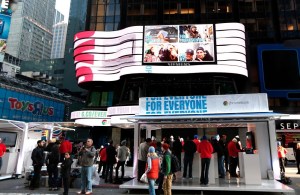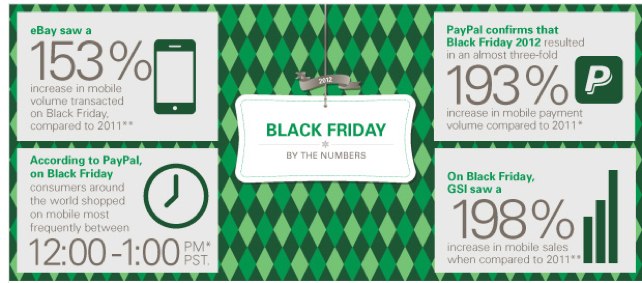Regardless of your views on our recent election, one thing that we
can generally agree on is that our political system is broken. There are
myriad contributors to our malaise, not the least of which is the voting system on which it’s all based.
But apart from the intractable structural problems, there is one area
that we in the web world are tantalizingly close to ameliorating:
constituent opinion.
 Protests
are a unique method of communication, because they combine three
essential components of effective civic speech: participants are
publicly counted in them; they publicly convey a message; and they give
reasonable evidence that participants are constituents. But soon we’ll
have better ways of conveying that information without having to brave
the Wisconsin winter.
Protests
are a unique method of communication, because they combine three
essential components of effective civic speech: participants are
publicly counted in them; they publicly convey a message; and they give
reasonable evidence that participants are constituents. But soon we’ll
have better ways of conveying that information without having to brave
the Wisconsin winter.
Americans have an embarrassment of sites on which one can voice an opinion. Yet none of them meet the requirements necessary for people to actually voice these opinions in a way that maximizes their political impact.
My startup, Our Ballot Box, spent four years in Madison identifying these requirements, testing their effectiveness, and building a web app that began to satisfy those requirements. We failed as a business, but our product has had some success and someone will pick up our torch. The market is ready and the political value is too great for it to remain unbuilt. Ten years from now an effective constituent communication site will serve as a central component of the political process that none of us can imagine living without.
Our talented developers had little time left to power a startup in addition to their demanding day jobs and young families. I should have expanded our team before launching with insufficient wind under sail. Our business models relied on long-term mass adoption, a big swing and tough sell that relies on more at-bats with investors than usual. And while Madison has a burgeoning web industry, it still lacks the number of investors of Silicon Valley, and I’m the only team member able to relocate.
I should have developed better business models and shaped our product to fit. Lastly, and most personally painful, I restrained my design passion by limiting myself to a first-draft approach to the UX and UI that resulted in a substandard experience. I did this to ensure I stayed focused on the business, marketing and fundraising parts of the startup. Ultimately, I simply didn’t execute well enough.
Single units of opinion. It may seem counterintuitive but single units of opinion for users to endorse or oppose are far more persuasive than compounded opinions. Whether it’s something as complex and packaged as “I am pro-life” or as granular as “Williamson St. should have a two-way connection to Winnebago St.” these are the data points that sculpt public policy, shape political platforms and guide the selection of political candidates. The multiple-choice questions on many political opinion sites fail this test because the limited number of answer options necessarily excludes other opinions and pressures people into selecting the least bad option. When single units of opinion are coupled with easy, user-generated opinions, users will have the freedom to fully express themselves through either their own words or an endorsement of another’s words.
User verification. In an age when astroturfing is becoming increasingly sophisticated, proving your identity in a political social network is essential. Many social media products offer different means of user verification. They range from methods as weak as providing a unique email or algorithms that spot fake accounts to methods as strong as requiring driver’s license or credit card information. To balance user acquisition with political strength, the ideal political social network will allow for multiple methods of identity verification across the confidence spectrum.
Surfacing and sorting. Getting the right opinions in front of the right users at the right time for their votes is delicate but essential, not only in terms of user engagement but also for political relevance. If an opinion is only voted on by a particular subset of constituents — such as, say, the followers of a particular radio host — then that opinion won’t reflect the full support or opposition of that constituency. Careful exposure is essential both to ensure opinion conveys a representative picture of overall public support, as well as to ensure that users have the opportunity to easily voice their opinions on the most politically valuable issues. Though partisans will always cry bias of all but their supporters, if the system is entirely algorithmic with no opportunity for organizational bias, it will gradually become accepted and treated as a neutral platform.
Ease of use and speed of creating and voting on existing opinions are also important factors for surfacing and political relevance. When people can vote on 10 issues a minute in a leanback experience that has political value, they’ll never stop.
Open, demographically indexed data. Finally, the potential of the opinion data must be unlocked by indexing it with users’ demographic and location data and making it publicly available. Then the general public, news organizations and all 10 (yes, 10!) political bodies that represent each citizen will be able to fully interpret the clear preferences of each constituency. Researchers and pollsters will also gain even greater insight by analyzing and modeling the data to compensate for the underrepresented constituencies.
Internet users have become more conscious of the amount of personal information they release. While that trend will continue, users will gladly volunteer their information when they realize it will give them greater political power: By aligning themselves with a particular group, they can then speak more effectively on behalf of that group. However, that depth of personal information must be used carefully to allow users to enjoy their desired level of privacy and be confident that their information won’t be misused. Successful political social networks must protect users’ identities while they speak at whichever hue of the anonymity-advocacy spectrum they so choose.
But the greatest change will come in how politicians operate. The one thing more important than money to a politician is votes, and when politicians know their constituents hold a clear, undeniable position on an issue, they almost always listen. Because their challengers are.
Our small startup took an important step but stumbled. Take the next step in our place and finally realize the dream of indirect democracy.
An Old Problem We Take For Granted
In the middle of February in Wisconsin, nearly 100,000 people, some driving hundreds of miles, all converged on the same location at the same time simply to convey information. These people didn’t want to be there, but they felt, rightly, that this extreme effort was the only means available to convey their opinions effectively. Protests
are a unique method of communication, because they combine three
essential components of effective civic speech: participants are
publicly counted in them; they publicly convey a message; and they give
reasonable evidence that participants are constituents. But soon we’ll
have better ways of conveying that information without having to brave
the Wisconsin winter.
Protests
are a unique method of communication, because they combine three
essential components of effective civic speech: participants are
publicly counted in them; they publicly convey a message; and they give
reasonable evidence that participants are constituents. But soon we’ll
have better ways of conveying that information without having to brave
the Wisconsin winter.Americans have an embarrassment of sites on which one can voice an opinion. Yet none of them meet the requirements necessary for people to actually voice these opinions in a way that maximizes their political impact.
My startup, Our Ballot Box, spent four years in Madison identifying these requirements, testing their effectiveness, and building a web app that began to satisfy those requirements. We failed as a business, but our product has had some success and someone will pick up our torch. The market is ready and the political value is too great for it to remain unbuilt. Ten years from now an effective constituent communication site will serve as a central component of the political process that none of us can imagine living without.
You’re Doing It Wrong: How Our Startup Failed
Our vision was very well received by regular citizens, activists, politicians, and news organizations, but we still failed as a business. That was my failure. As a first-time entrepreneur and CEO, I’d like to think I at least made some novel mistakes, but the reality is that they were mostly pedestrian.Our talented developers had little time left to power a startup in addition to their demanding day jobs and young families. I should have expanded our team before launching with insufficient wind under sail. Our business models relied on long-term mass adoption, a big swing and tough sell that relies on more at-bats with investors than usual. And while Madison has a burgeoning web industry, it still lacks the number of investors of Silicon Valley, and I’m the only team member able to relocate.
I should have developed better business models and shaped our product to fit. Lastly, and most personally painful, I restrained my design passion by limiting myself to a first-draft approach to the UX and UI that resulted in a substandard experience. I did this to ensure I stayed focused on the business, marketing and fundraising parts of the startup. Ultimately, I simply didn’t execute well enough.
A Vision To Transform Political Speech
The good news is that there are startups close to successfully building such a space. My goal is to offer a direction to anyone else excited to address one of the most pernicious problems in our society. There are five basic components necessary for a political social network to effectively solve the constituent communication problem:- User-generated opinions
- Single units of opinion
- User verification
- Surfacing and sorting
- Open, demographically indexed data
Single units of opinion. It may seem counterintuitive but single units of opinion for users to endorse or oppose are far more persuasive than compounded opinions. Whether it’s something as complex and packaged as “I am pro-life” or as granular as “Williamson St. should have a two-way connection to Winnebago St.” these are the data points that sculpt public policy, shape political platforms and guide the selection of political candidates. The multiple-choice questions on many political opinion sites fail this test because the limited number of answer options necessarily excludes other opinions and pressures people into selecting the least bad option. When single units of opinion are coupled with easy, user-generated opinions, users will have the freedom to fully express themselves through either their own words or an endorsement of another’s words.
User verification. In an age when astroturfing is becoming increasingly sophisticated, proving your identity in a political social network is essential. Many social media products offer different means of user verification. They range from methods as weak as providing a unique email or algorithms that spot fake accounts to methods as strong as requiring driver’s license or credit card information. To balance user acquisition with political strength, the ideal political social network will allow for multiple methods of identity verification across the confidence spectrum.
Surfacing and sorting. Getting the right opinions in front of the right users at the right time for their votes is delicate but essential, not only in terms of user engagement but also for political relevance. If an opinion is only voted on by a particular subset of constituents — such as, say, the followers of a particular radio host — then that opinion won’t reflect the full support or opposition of that constituency. Careful exposure is essential both to ensure opinion conveys a representative picture of overall public support, as well as to ensure that users have the opportunity to easily voice their opinions on the most politically valuable issues. Though partisans will always cry bias of all but their supporters, if the system is entirely algorithmic with no opportunity for organizational bias, it will gradually become accepted and treated as a neutral platform.
Ease of use and speed of creating and voting on existing opinions are also important factors for surfacing and political relevance. When people can vote on 10 issues a minute in a leanback experience that has political value, they’ll never stop.
Open, demographically indexed data. Finally, the potential of the opinion data must be unlocked by indexing it with users’ demographic and location data and making it publicly available. Then the general public, news organizations and all 10 (yes, 10!) political bodies that represent each citizen will be able to fully interpret the clear preferences of each constituency. Researchers and pollsters will also gain even greater insight by analyzing and modeling the data to compensate for the underrepresented constituencies.
Internet users have become more conscious of the amount of personal information they release. While that trend will continue, users will gladly volunteer their information when they realize it will give them greater political power: By aligning themselves with a particular group, they can then speak more effectively on behalf of that group. However, that depth of personal information must be used carefully to allow users to enjoy their desired level of privacy and be confident that their information won’t be misused. Successful political social networks must protect users’ identities while they speak at whichever hue of the anonymity-advocacy spectrum they so choose.
Political Social Networks In The Wings
There are a number of companies that competed against Our Ballot Box that are well on their way to providing a truly effective way for constituents to communicate. They have great products that they can expand to execute this vision:- Votizen was moving in this direction with its publicly endorsable, user created Letters. Lately they seem to have tacked away from constituent communication in favor of political candidate promotion through social pressure, though that could be a momentary change to take advantage of the elections. With the elections now over they may retool again to focus more on problems of governance.
- Change.org has a great petition platform that could increase its political relevance by adding the parts of this vision it lacks, noteably adding open demographics and allowing votes against petitions. If they combined the brute force of large absolute numbers with the tools necessary to show percent support and evidence that their public response is relatively representative of the constituency, they could have a much more politically powerful tool.
- POPVOX is doing a lot right, and while focusing on public opinion for H.R. 2526 Amendment 4 has a lot of value (particularly to Congressional staffers), it’s unlikely to have the popular reach and political strength of stating “70% of Americans believe National Forests shouldn’t host private logging roads.” Their political strength could be tremendous if they had a simple opinion layer on top of their excellent legislative depth, so casual users can easily sound off at a high level while power users can drill down further.
- Votifi is an excellent opinion platform with a promising analytics focus. Plus their “Simplifi, Quantifi, Amplifi” nearly matches our “Verify, Quantify, Amplify!” If they were to successfully incorporate user-generated questions and statements they could go a long way toward becoming a central voice of the people.
Effect Change
To paraphrase T.S. Elliot and Clay Shirky: one of the most momentous things to happen to a culture is that it acquires a new form of arguing. The Internet has already given us a new form of individual argumentation, but it now has the potential for the next, much greater form: collective argumentation. As a society and country, when we can definitively say “this is who we are, and this is what we think,” we will fundamentally reshape the political process by speaking for ourselves in an undeniable voice that is impossible to ignore. When we put the lie to claims from talking heads that they speak for us, we will have more focused and productive public debate.But the greatest change will come in how politicians operate. The one thing more important than money to a politician is votes, and when politicians know their constituents hold a clear, undeniable position on an issue, they almost always listen. Because their challengers are.
Our small startup took an important step but stumbled. Take the next step in our place and finally realize the dream of indirect democracy.







